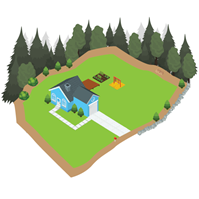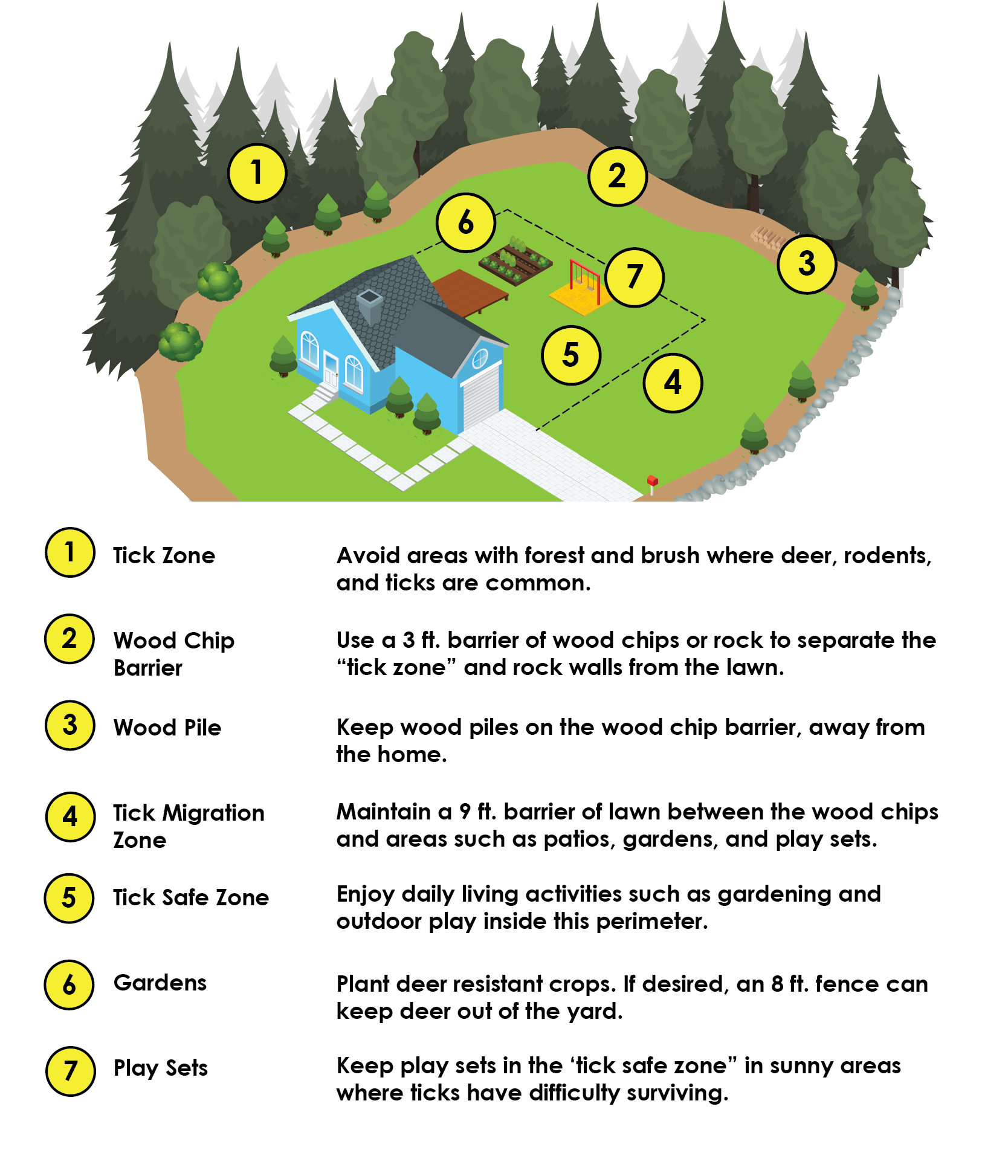Create a Tick-Free Yard
 Did you know you can make your property less appealing to ticks through a number of landscaping techniques? Here are some tips to help keep your yard tick-free: Keep in mind you can do 1 or all, and never do anything you are not comfortable with.
Did you know you can make your property less appealing to ticks through a number of landscaping techniques? Here are some tips to help keep your yard tick-free: Keep in mind you can do 1 or all, and never do anything you are not comfortable with.
- Clear tall grasses and brush around homes and at the edge of lawns.
- Place a wood chip or gravel barrier between lawns, wooded areas, and around all patios and play equipment. This will deter ticks from making their way into recreational areas.
- Mow the lawn frequently and keep all leaves raked. Concerned about removing leaf litter or what is the best balance to mulch, remove “excessive leaves” and leave some natural leaves to protect other insects? Check out this great vlog from Dr. Frank Rossi at NYSIPM “Fall Lawn IPM: Managing Leaves & Ticks”.
- Stack wood neatly and in a dry area to discourage rodents from taking up residence. Ticks feed on rodents in their nests.
- Keep play equipment, decks, and patios away from yard edges and trees. If possible, place them in direct sunlight.
- Remove any old furniture or trash from the yard.
- Research your plants and trees. Do you have some that are attracting deer to your yard?

Integrated Tick Management
Integrated tick management uses a combination of strategies such as: host reduction/treatments (deer and rodents, etc.), habitat manipulation, and least-toxic pesticides (i.e., fungal biopesticides) targeting different tick life stages as well as their hosts. Single interventions to manage ticks are often limited in their time to effectiveness, duration, and efficacy (effectiveness). (Sullivan, Cheryl Frank et al., 2022)
Tick Tubes
Blacklegged ticks (deer ticks) feed on mice in their nests, especially in Spring and Fall. You can buy tick tubes to help kill these larva. Tick tubes are cardboard/biodegradable tubes with permethrin-treated cotton. When rodents take the cotton to build their nests, the ticks are exposed to permethrin and die. All the while, the mice, other mammals, and your lands are unharmed and undisturbed.
- Buy tick tubes.
- Refer to the Connecticut Agricultural Experiment Station’s Tick Management Handbook for a comprehensive guide to preventing ticks and their bites through landscaping.
- Learn about Bait Boxes.
- We don’t recommend making your own tick tubes. Why? 1) They probably won’t work. 2) You could be putting yourself, others, pets, nontarget animals, and the environment at unacceptable risk. 3) It is against the law. Want to read the details? Hop on over to Cornell’s “Think IPM Blog: 3 Reasons Why Making Your Own Tick Tubes is a Bad Idea”.
Spraying the perimeter of your yard
Some products contain pesticides that have relatively low risk of causing problems, thus are available to anyone (“general use materials”). Others have a greater risk of causing problems if users do not carefully follow directions. These (restricted use products) are available only to licensed pesticide applicators or professional pest control personnel. We recommend contracting with a licensed pesticide application person or company to assure proper and effective application for tick control.
Alternative to spraying traditional, effective chemicals
The use of pathogenic fungi is perhaps the most promising biological control for ticks. These fungi penetrate the tick’s cuticle, or outer covering, move into the body, and ultimately kill both nymphal and adult stages of the tick. Commercial products containing these fungi are available for both granular and spray applications. The fungus Metarhizium anisopliae is registered for tick control.
Check out this video from TickEncounter/URI on the effectiveness of Professional Perimeter Spraying and Protecting Your Yard.
